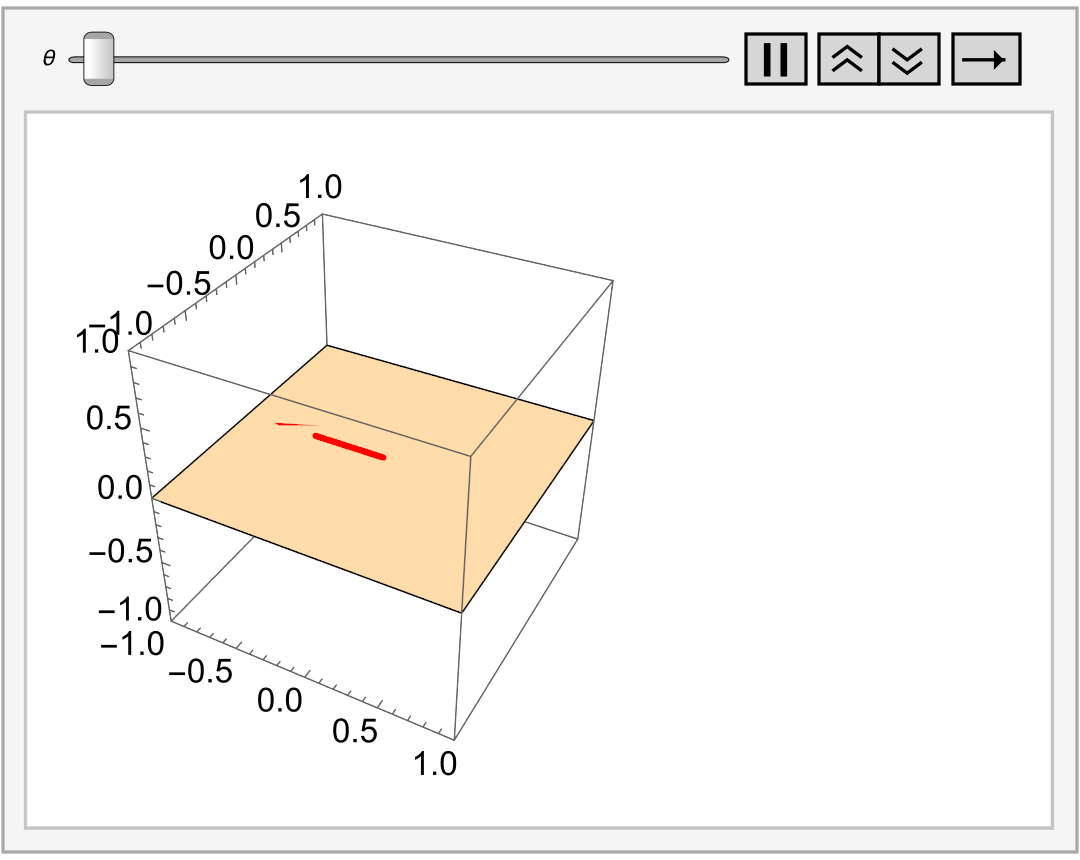The Wolfram Mathematic notebook which contains the code that produces all the Mathematica output in this web page may be downloaded at this link. Caution: This notebook will evaluate, cell-by-cell, sequentially, from top to bottom. However, due to re-use of variable names in later evaluations, once subsequent code is evaluated prior code may not render properly. Returning to and re-evaluating the first Clear[ ] expression above the expression no longer working and evaluating from that point through to the expression solves this problem.
Remove[ "Global`*"] // Quiet (* remove all variables *)
Solving A x = b
Theorem (Kronecker--Capelli): A system of linear algebraic equations A x = b has a solution if and only if the matrix A has the same rank as the augmented matrix \( \left[ {\bf A} \,|\,{\bf b} \right] . \) ■
Theorem (Fredholm matrix Theorem): A system of linear algebraic equations A x = b has a solution if and only if b is orthogonal to every solution of the homogeneous equation z A = 0, that is, their inner product is zero: \( {\bf z} \cdot {\bf b} = 0 . \) In other words, the input vector b must be orthogonal to every solution of the homogeneous adjoint equation \( {\bf A}^{\ast} {\bf y} = {\bf 0} , \) which means that \( {\bf y} \perp {\bf b} \quad \Longleftrightarrow \quad {\bf y} \cdot {\bf b} =0 . \) ■
Necessity Proof: Suppose that the linear system A x = b has a solution. Then for every \( {\bf z} \in \mathbb{C}^m \) we have the equality
A vector space is called finite-dimensional if it has a basis consisting of a finite
number of elements. The unique number of elements in each basis for V is called
the dimension of V and is denoted by dim(V). A vector space that is not finite-
dimensional is called
infinite-dimensional.
The next example demonstrates how Mathematica can determine the basis or set of linearly independent vectors from the given set. Note that basis is not unique and even changing the order of vectors, a software can provide you another set of linearly independent vectors.
MatrixRank[m =
{{1, 2, 0, -3, 1, 0},
{1, 2, 2, -3, 1, 2},
{1, 2, 1, -3, 1, 1},
{3, 6, 1, -9, 4, 3}}]
Then each of the following scripts determine a subset of linearly independent vectors:
m[[ Flatten[ Position[#, Except[0, _?NumericQ], 1, 1]& /@
Last @ QRDecomposition @ Transpose @ m ] ]]
or, using subroutine
MinimalSublist[x_List] :=
Module[{tm, ntm, ytm, mm = x}, {tm = RowReduce[mm] // Transpose,
ntm = MapIndexed[{#1, #2, Total[#1]} &, tm, {1}],
ytm = Cases[ntm, {___, ___, d_ /; d == 1}]};
Cases[ytm, {b_, {a_}, c_} :> mm[[All, a]]] // Transpose]
we apply it to our set of vectors.
m1 = {{1, 2, 0, -3, 1, 0}, {1, 2, 1, -3, 1, 2}, {1, 2, 0, -3, 2,
1}, {3, 6, 1, -9, 4, 3}};
MinimalSublist[m1]
{{1, 1, 1, 3}, {0, 1, 0, 1}, {1, 1, 2, 4}}
One can use also the standard Mathematica command: IndependenceTest.
■
Fredholm's finite-dimensional alternative
First, we need to recall some definitions.

It is unique, because ker(c) = kerf, and it is an isomorphism, because the inverse mapping also exists and is defined uniquely. The point of uniting these spaces into pairs (with and without the prefix "co") is explained in the theory of duality.
In particular, if dimX = dimY = n < ∞, then for any linear operator f on X, indf = 0. This implies the so-called Fredholm alternative:
Theorem (Fredholm matrix Theorem): A system of linear algebraic equations A x = b has a solution if and only if b is orthogonal to every solution of the homogeneous equation z A = 0, that is, their inner p either the equation g(x) = y is solvable for all y and then the equation g(x) = 0 has only zero solutions; or this equation cannot be solved for all y and then the homogeneous equation g(x) = 0 has non-zero solutions. More precisely, if ind g = 0, then the dimension of the space of solutions of the homogeneous equation equals the codimension of the spaces on the right hand sides for which the inhomogeneous equation is solvable.
- Axler, Sheldon Jay (2015). Linear Algebra Done Right (3rd ed.). Springer. ISBN 978-3-319-11079-0.
- Halmos, Paul Richard (1974) [1958]. Finite-Dimensional Vector Spaces (2nd ed.). Springer. ISBN 0-387-90093-4.
- Katznelson, Yitzhak; Katznelson, Yonatan R. (2008). A (Terse) Introduction to Linear Algebra. American Mathematical Society. ISBN 978-0-8218-4419-9.
- Treil, S., Linear Algebra Done Wrong.
- Wikipedia, Dual space/

